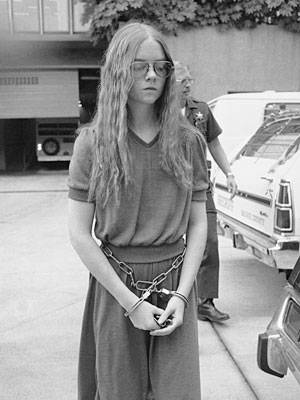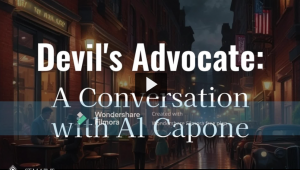“Ugh, it’s Monday” are the words that usually follow the arrival of the most dreaded day of the week. The sighs floating in the air are palpable and nothing seems possible. Mondays always carry with them a negative connotation and contain components such as depression, fatigue, and anguish. But to a San Diego elementary school, and to a troubled sixteen year old, Monday, January 29, 1979 held an even more distressing meaning.

Students at Grover Cleveland Elementary School, located in San Diego, California, began what they believed would be a normal Monday morning like any other, with bells ringing and students racing to their classes. Little did they know, however, that across the street, sixteen-year-old Brenda Ann Spencer was aiming her .22 caliber semiautomatic rifle right at society’s ultimate refuge, the elementary school, and its surroundings. After the first bell rang, Brenda broke the panels on the front door of her home, which was located right across the street from the elementary school. And she began to fire. The school’s principal, Burton Wragg, while rushing outside, was hit on the shoulder and chest with Spencer’s bullets and eventually died. Michael Suchar, the school’s custodian, ran outside with a blanket in order to cover Wragg and keep him from going into shock, but he quickly became the second victim of Spencer’s shooting and lost his life. In between all the chaos, 28 year old Robert Robb, a recent graduate of the police academy, while examining Wragg’s and Suchar’s bodies, was shot under his right shoulder blade.1 He would go on to survive though, along with the eight other children who were wounded in the incident. At least three of those children had abdominal wounds. A nine-year-old student, Cam Miller, was struck in the back with a bullet that exited through his chest without hitting any internal organs. Another, Christy Buell, was shot through her abdomen and in the buttocks, and had to undergo surgery in order to repair her intestine.2
When Gus Stevens, a reporter for the San Diego Evening Tribune, began calling around the area to gain more information about the shooting, he coincidentally placed a call to Spencer’s home where she gave him exactly what he wanted. She described the shooter, a sixteen year old, and the shooter’s address. When Stevens realized that she gave him her own address, he recognized what was going on and requested an interview while another staff member informed the police of the situation. The police, now aware of where the shots were coming from, were able evacuate the children and obstruct Spencer’s line of sight while trying to negotiate with her. After several hours, Brenda Spencer surrendered her weapon and several rounds of ammunition, and was subsequently arrested. While on the phone with Stevens, Spencer had stated that she was just shooting for the “fun of it.” She went on to say that she just didn’t like Mondays and did this “because it’s a way to cheer up the day.”3

Contrary to her initial claim, she later went on to state in her 2001 parole hearing that she had been “sexually abused by [her] father” and was “waiting for the cops to show up so they could shoot [her].”4 This new information has fueled many more theories today about Brenda Spencer’s true motives in committing such a crime. During her pretrial psychological testing, an injury to Spencer’s temporal lobe came to light. Spencer has also stated in a letter from prison that she experiences “grand mal seizures” that she has to counteract with medications.5 Such a brain injury would definitely be a precursor to epilepsy, which is two to four times more common among violent offenders than the public.6 The lack of treatment she received for this disease, to some, proves the neglect that she experienced from her family and in her childhood. Psychologist Jonathan Fast introduces the idea that her brain injury, abuse, and the effects of it pushed her to her final actions. He believes that the shame, ridicule, inferiority, and powerlessness that she felt encouraged her to go as far as she did. In another letter she wrote in prison, she stated that her “father had done everything a person could do to another person. The beatings, the touching, the emotional abuse.” She went on to state that no one, not teachers or counselors, gave her assistance through this, so she simply thought that this was how the world and how life worked. When her father gifted her the .22 caliber rifle, she thought that he was finally telling her to do it: to take her life successfully, unlike her past suicide attempts, and leave the world forever.7
Whether these theories are true or not, Brenda Spencer was tried as an adult and pleaded guilty to two counts of murder and nine counts of assault. She was sentenced to twenty-five years to life in prison, and is still serving her sentence at the California Institute for Women. The shooting has inspired a song by the Boomtown Rats called “I Don’t Like Mondays,” and has also gained other media coverage through a documentary.8 Her action went down in history as the first high profile school shooting and has become a vanguard to many future, unimaginable school situations and violent outbreaks. Whether Spencer was a cold-hearted killer or a truly lost and confused soul that simply wanted an escape, it is undeniable that her horrible actions have had some frightening consequences in our modern world.
- Jonathan Fast, Ceremonial Violence (New York: The Overlook Press, 2008), 25, 70-71. ↵
- Tamara Jones, “Look Back in Sorrow,” Good Housekeeping 227, no.5 (November 1998): 118. ↵
- Jonathan Fast, “Unforgiven and Alone: Brenda Spencer and Secret Shame,” in School Shootings: International Research, Case Studies, And Concepts For Prevention, ed. Nils Böckler (New York: Springer, 2013), 253-255. ↵
- Debra Sevey, “Subsequent Parole Consideration Hearing of Brenda Spencer,” (Capitol Electronic Reporting, 2001), 15-16. ↵
- Jennifer Furio, Letters From Prison: Voices Of Women Murderers (New York: Algora Pub., 2001), 134. ↵
- Jonathan Fast, ” Unforgiven and Alone: Brenda Spencer and Secret Shame,” in School Shootings: International Research, Case Studies, And Concepts For Prevention, ed. Nils Böckler (New York: Springer, 2013), 251. ↵
- Jennifer Furio, Letters From Prison: Voices Of Women Murderers (New York: Algora Pub., 2001), 134-135. ↵
- Encyclopedia of School Crime and Violence, September 2011, s.v. “Brenda Spencer,” by Laura L. Finley. ↵



243 comments
Blanca Martinez
Cool article, it’s really interesting, the things people do that make them a whole lot different from others. Psychopathic tendencies are tendencies that create an emotionless monotone person who knows how to act, so I apologize now for thinking that this woman did it for fun and didn’t actually have anything wrong with her. But yeah very interesting article, although very sad that this inspired many more school shootings.
Eduardo Foster
Very intrigued by article but at the same time horrified. Did not have heard nothing before of this shooting back at 1979. It is very impactful what teenagers have done in the last years in school shootings. The only doubt I remain with is why she did it? I think the answer to question would always remained into a mystery. Great article!
Jesica Rivera
Great introduction! Your article is incredibly detailed and left me well informed about an event I had no previous knowledge about. It’s sad to see how so many unnecessary death’s occurred over a teenager’s decision to pull the trigger and even worse to realize this is still an ongoing problem in America. Similar the recent shooting in Las Vegas, there was no real reason for so many people to die. Although she seemed to have a harsh upbringing, her acts are unforgivable.
Anthony Robledo
Great use of images, and your introduction was pretty great. Honestly i had no idea what this article was going to be about, but that is how catchy it was. With all the current news about the attack in las vegas, this article was really eye opening. Its crazy what other people will do. To shoot people just because you hate Mondays. That is just horrendous.
Troy Leonard
you never know what people are going thought behind closed doors. she was sexually abused by her father and she thought her only way out was to kill herself. she needed a healthy way to take the pain away and shooting at an elementary school was most definitely not the way to do it. I’m from southern California and i have never heard of this shooting and its quite shocking to read about.
Rafael Azuaje
This is such a sad story. I cannot imagine what it must have been like for the people at Grover Cleveland Elementary School that morning. I was going to comment on how maybe people alive during the 1970s would be more shocked than we are at school shootings- but then I looked up the history of school shootings. I found that school shootings have occurred in the US since the 19th century. This was shocking to me.
Sebastian Castro Ramos
I can’t imagine how terrifying it was for the children in Grover Cleveland Elementary to know someone was shooting their school, and knowing they could be shot. Must have been a traumatizing experience for them. I think Brenda’s claims that she was abused by her father are true, because I can’t imagine a child wanting to shoot people just for fun. She must have had some terrible experiences that affected her emotionally and led her to shoot the school.
Cherice Leach
Nobody likes Mondays as is, but after this tragedy it’s easy to assume Mondays turned into a horrifying memory for the victims of this shooting. It’s such a shame what happens to some teenagers as they grow up. People need to understand that adolescent years are some of the most influential to a person and what happens during those years is what shapes a person. I feel bad for what happened to this teenage girl but I don’t think it can be totally unforgiven for what she did to this elementary school.
Angela Rodriguez
As much as I was intrigued reading this article, it was also sad to here about. I had heard about other school shootings, but was unaware of the 1979 school shooting at Grover Cleveland Elementary School in San Diego, California. It’s sad to hear that these kids thought it was another typical day at school, but that someone else had a plan for them.
Morghan Armenta
I have to admit that the entire article I was waiting to read the authors opinion on why the shooter did what she did. Did the shooters actions happen as a result of pschological impacts or pure innate evil? To my avail the author does a great job just presenting the information as an unbiased source but explaining it in depth to help the reader understand a horrible moment in history.